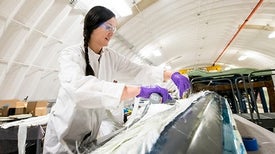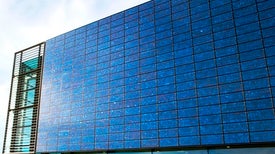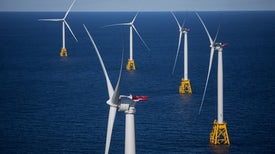
Sunlight Powers Portable, Inexpensive Systems to Produce Drinking Water
A new generation of tech uses heat from the sun to provide clean, salt-free water

A new generation of tech uses heat from the sun to provide clean, salt-free water

Electric cars are great, but higher fuel economy for vehicles of all sizes is better

If the blades can hold up to outdoor conditions, they could help accelerate onshore and offshore wind power

The falling costs of renewables has helped shift political winds around power generation

Though many power companies have set ambitious long-term targets, more immediate action is needed

A zero-carbon supplement to wind and solar

A bioinspired arrangement could save energy by allowing one plane to provide extra lift to another—if both aircraft can remain stable

Scientific American senior editor Mark Fischetti and associate editor Andrea Thompson talk about this election and the future of U.S. energy research and policy.

These turbines can be used in deeper waters than existing ones, which opens more areas of the coast to wind power

The renewable boom needs to continue in order to decarbonize the energy grid, but key tax incentives are ending

The group has revealed a road map on accelerating government clean-tech investment for the next presidential administration

Pumping cheap iron-oxide-rich red bricks with specific vapors that form polymers enables the bricks to become electrical-charge-storage devices.

Concerns about costs and safety remain, however

Higher temperatures, rising flood risks and increased water stress mean facilities need to take additional resiliency measures

A new test bed at the National Renewable Energy Laboratory will explore ways to ease the shift to renewables and energy storage systems

A piecemeal approach risks overloading electrical systems and tangle of deep sea cables

The city aims to add more electric chargers and to convert its bus fleet to meet its emissions-reduction goals

Radioactive plutonium is crucial for keeping this and other power-hungry deep-space missions warm and working for years on end

Originally published in August 1908

The system works like noise-cancelling headphones but fits over an open window. Christopher Intagliata reports.
Support science journalism.

Thanks for reading Scientific American. Knowledge awaits.
Already a subscriber? Sign in.
Thanks for reading Scientific American. Create your free account or Sign in to continue.
Create Account